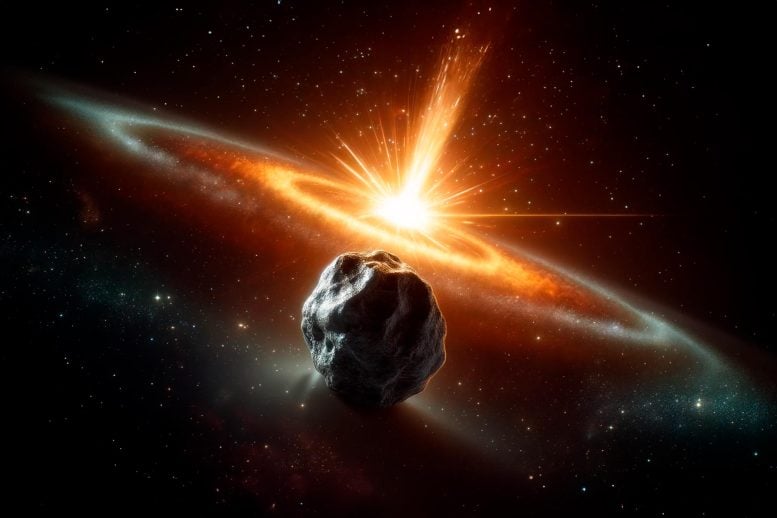
Researchers have discovered a rare dust particle in a meteorite that was formed by a star other than our sun. Using advanced atom probe tomography, they analyzed the particle’s unique magnesium isotopic ratio and revealed its origin from a newly identified type of hydrogen-burning supernova. This development provides deeper insight into cosmic events and star formation. Credit: SciTechDaily.com
Scientists have discovered a meteorite particle with an unprecedented magnesium isotopic ratio, indicating its origin from a hydrogen-burning supernova.
Research has discovered a rare dust particle trapped in an ancient extraterrestrial meteorite formed by a star other than our Sun.
The discovery was made by lead author Dr. Nicole Neville and her colleagues during her PhD studies at Curtin University, now at the Institute of Lunar and Planetary Sciences in collaboration with NASAJohnson Space Center
Meteorites and pre-solar grains
Meteorites are mainly composed of material that formed in our solar system and can also contain tiny particles that originated from stars that were born long before our sun.
Clues that these particles, known as pre-solar grains, are remnants of other stars can be found by analyzing the different types of elements within them.
Innovative analytical techniques
Dr. Neville used a technique called atom Probe tomography for particle analysis and atomic-scale chemistry reconstruction, accessing hidden information within.
“These particles are like celestial time capsules, providing a snapshot of the life of their parent star,” Dr Neville said.
“The material that formed in our solar system has predictable isotope ratios—a variety of elements with different numbers of neutrons. The particle we analyzed has a ratio of magnesium isotopes that is distinct from anything in our solar system.
“The results were literally off the charts. The most extreme Mg isotopic ratio in previous studies of pre-solar grains was about 1200. The seed in our study has a value of 3025, which is the highest value discovered.
This extraordinarily high isotopic ratio can only be explained by formation in a recently discovered type of star – a hydrogen-burning supernova.
Advances in astrophysics
Dr David Saxe, co-author of the John de Latter Center at Curtin, said the research breaks new ground in how we understand the universe, pushing the boundaries of analytical techniques and astrophysical models.
“The Atom Probe has given us a whole level of detail that we haven’t been able to access in previous studies,” Dr Saxe said.
A hydrogen-burning supernova is a type of star that was recently discovered, around the same time as the analysis of the dust particle. The use of atom probes in this study will provide a new level of detail to help us understand how these stars formed.
Linking laboratory findings with cosmic phenomena
Professor Phil Bland from Curtin’s School of Earth and Planetary Sciences said: “New discoveries from the study of rare particles in meteorites allow us to gain insight into cosmic events beyond our solar system.
“It is very exciting to be able to link atomic-scale measurements in the laboratory to a recently discovered type of star.”
Research entitled “Examination of the element on the atomic and isotopic scale 25Magnesium-rich stellar dust from an H-burning supernova” was published in Journal of Astrophysics.
Reference: “Atomic-scale element and isotopic investigation”. 25Mg-rich stellar dust from an H-burning supernova” by ND Nevill, PA Bland, DW Saxey, WDA Rickard, P. Guagliardo, NE Timms, LV Forman, L. Daly and SM Reddy, 28 March 2024. Journal of Astrophysics.
DOI: 10.3847/1538-4357/ad2996
#Unprecedented #findings #challenge #astrophysical #models #meteorites